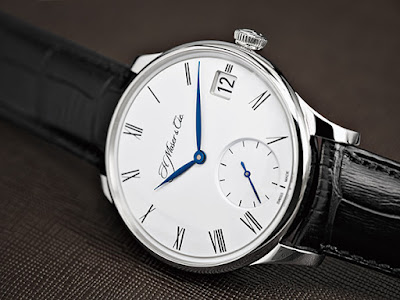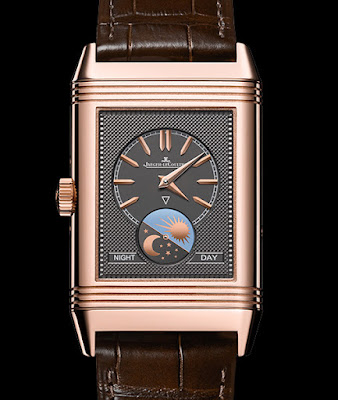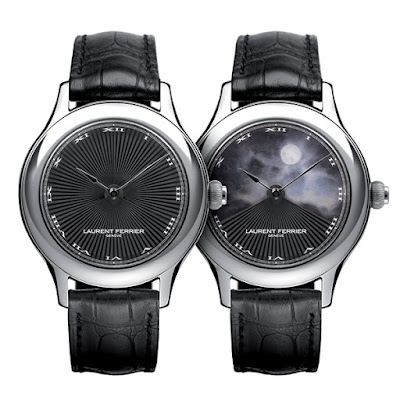 |
Marine Tourbillon Grand Deck |
By Jason Heaton
A long history of nautical timekeeping inspires three new
Ulysse Nardin watches.
Despite its land-locked headquarters in the Swiss Alps,
Ulysse Nardin has always had a strong tie to the sea. In 1846, after finishing
his apprenticeship, the company’s namesake founded his own manufacture in Le
Locle, and concentrated his efforts on building marine chronometers.
 |
Part of a limited edition of 18 pieces. |
In those days, navigating a ship relied on a sextant, a
clear view of the sky, and a chronometer — a precise timepiece that could keep
time for weeks on end while being pitched to and fro by the unpredictable
rolling of the waves. Ulysse Nardin earned a reputation for building
chronometers suitable for seafaring that has carried to the present day. With
the new Marine Tourbillon Grand Deck, Ulysse Nardin translates its nautical
heritage into an extraordinary timepiece.
In a modern age of satellite navigating, this watch is still
accurate enough for celestial wayfinding if you ever end up offshore with dead
batteries in your GPS. Its vaunted accuracy can be attributed to a movement
driven by two mainspring barrels, one dedicated to timekeeping and the other to
the watch’s complications. A tourbillon rotates the escapement once every 60
seconds to balance out the deleterious effects of gravity on the watch’s rate.
 |
Marine Chronograph Annual Calendar |
Despite its timekeeping prowess, it’s not the movement
that’s most impressive about the Marine Tourbillon Grand Deck. That distinction
goes to the unique time display, which incorporates Dyneema, a polyethylene
fiber that, when woven into a strand, is many times stronger than steel. The
material is also much lighter and immune to corrosion, which is why it’s used
for riggings on modern sailboats. Here, it’s used to pull the “boom” of the
retrograde display across the dial. As time passes, the boom travels across the
minute scale, snapping back at the passing of each hour, which is shown in an
aperture at the top.
Continuing the nautical theme, the wood-marquetry dial is
made to resemble the teak decking used on sailing yachts. The watch, which is
limited to a mere 18 pieces, is a fitting continuation of Ulysse Nardin’s
history of seafaring timekeeping.
Under Sail
Equally capable and outstanding in its own right is the
Marine Chronograph Annual Calendar. As its name suggests, this is not only a
12-hour chronograph, but it also tracks the month and date for a full year,
requiring correction only at the end of February. While this is an elegant
watch, the Marine Chronograph Annual Calendar remains suitable for extended
time at sea with a steel case that is water resistant to 100 meters.
 |
Ulysse Anchor Tourbillon |
Finally, hearkening back to its innovative roots, the Ulysse
Anchor Tourbillon continues Ulysse Nardin’s tradition of precision timekeeping
with a tourbillon and constant force escapement made from anti-magnetic
silicium. All of this engineering is housed in a refined white or rose gold
case that boasts a textured enamel dial in a color that is fittingly as deep
blue as the sea.
For a company that got its start building marine
chronometers, Ulysse Nardin has stayed true to its nautical legacy. These new
timepieces advance the brand’s reputation for innovation and precise
timekeeping while evoking a direct connection to the sea.

































